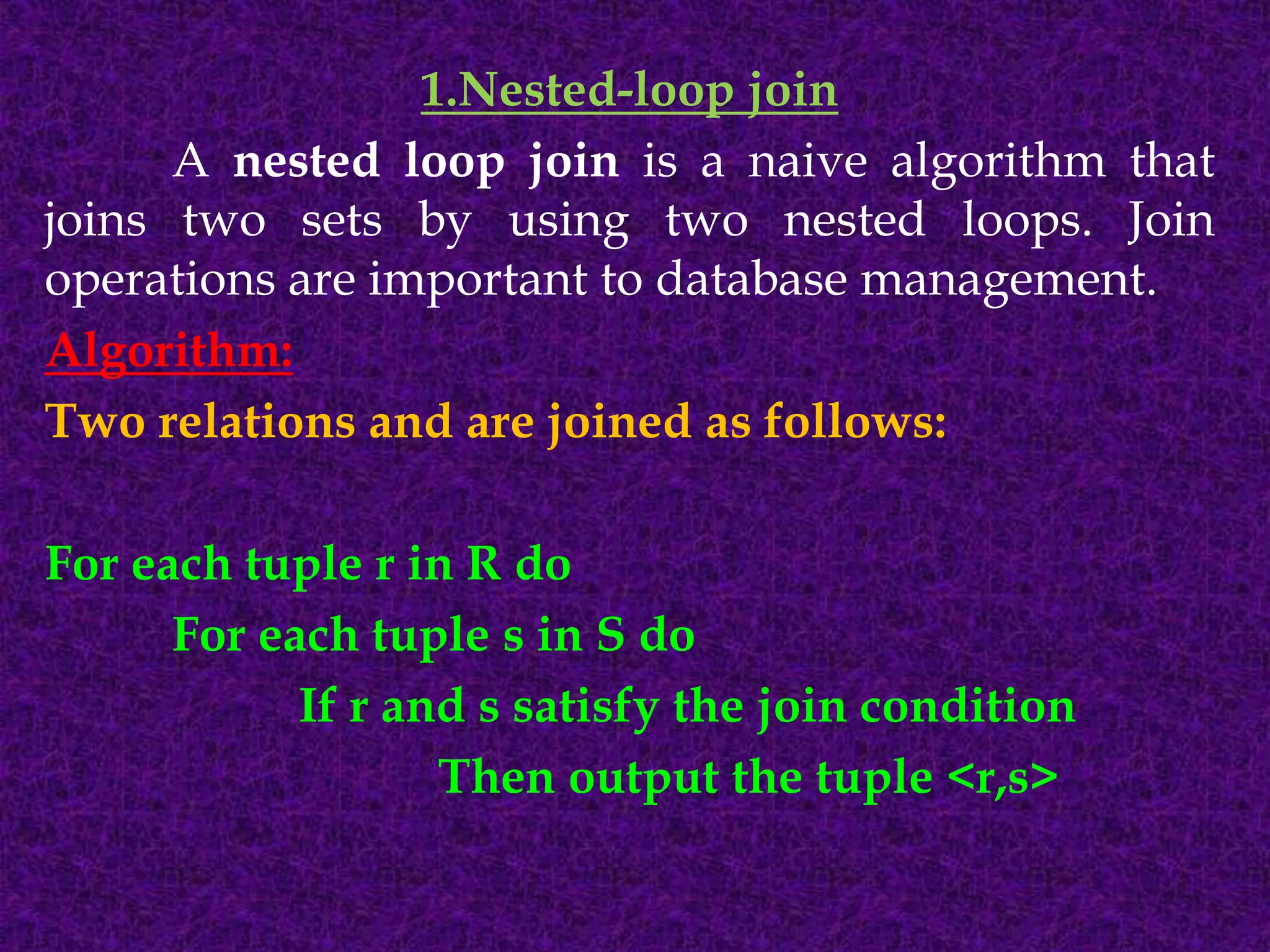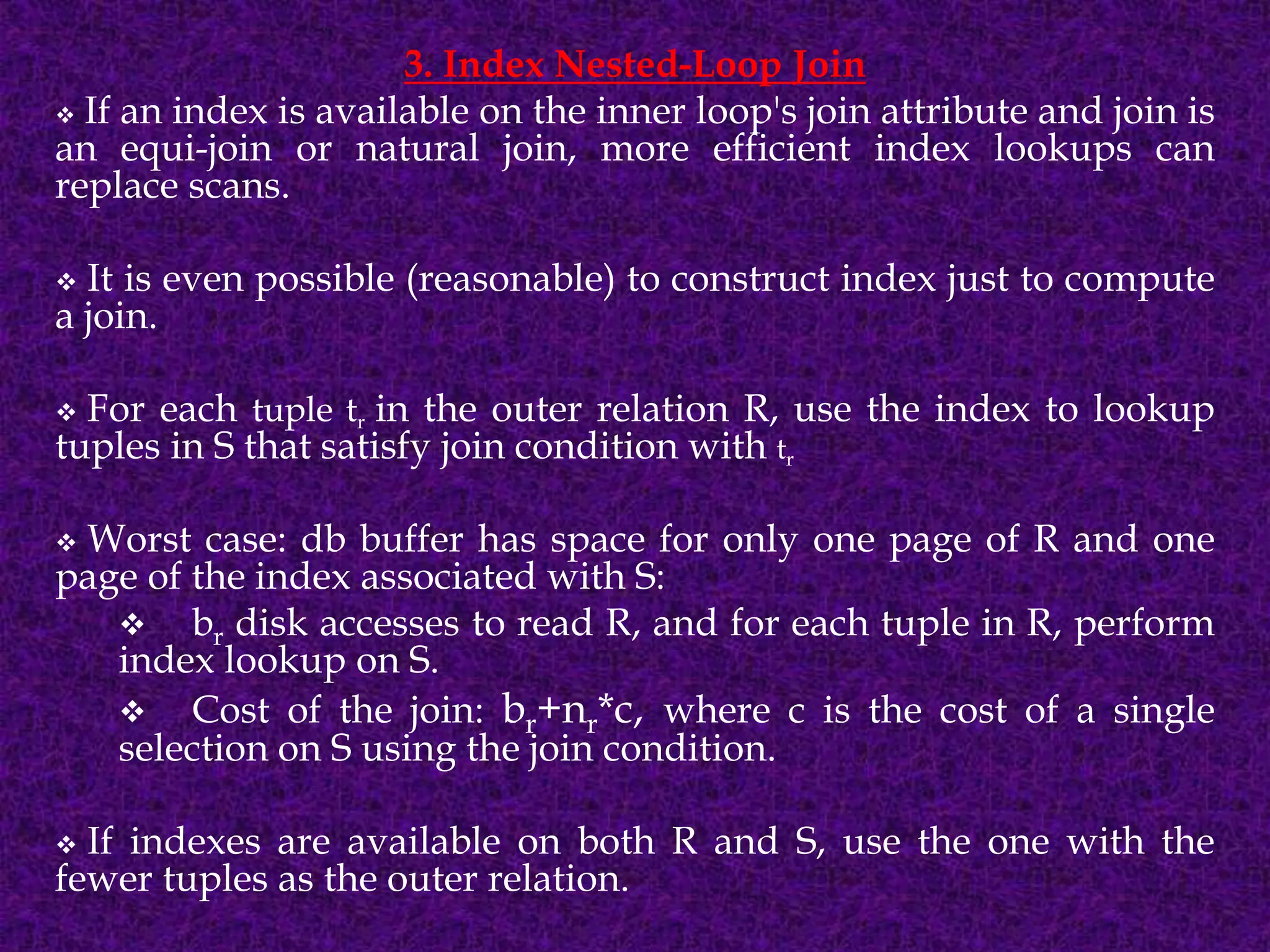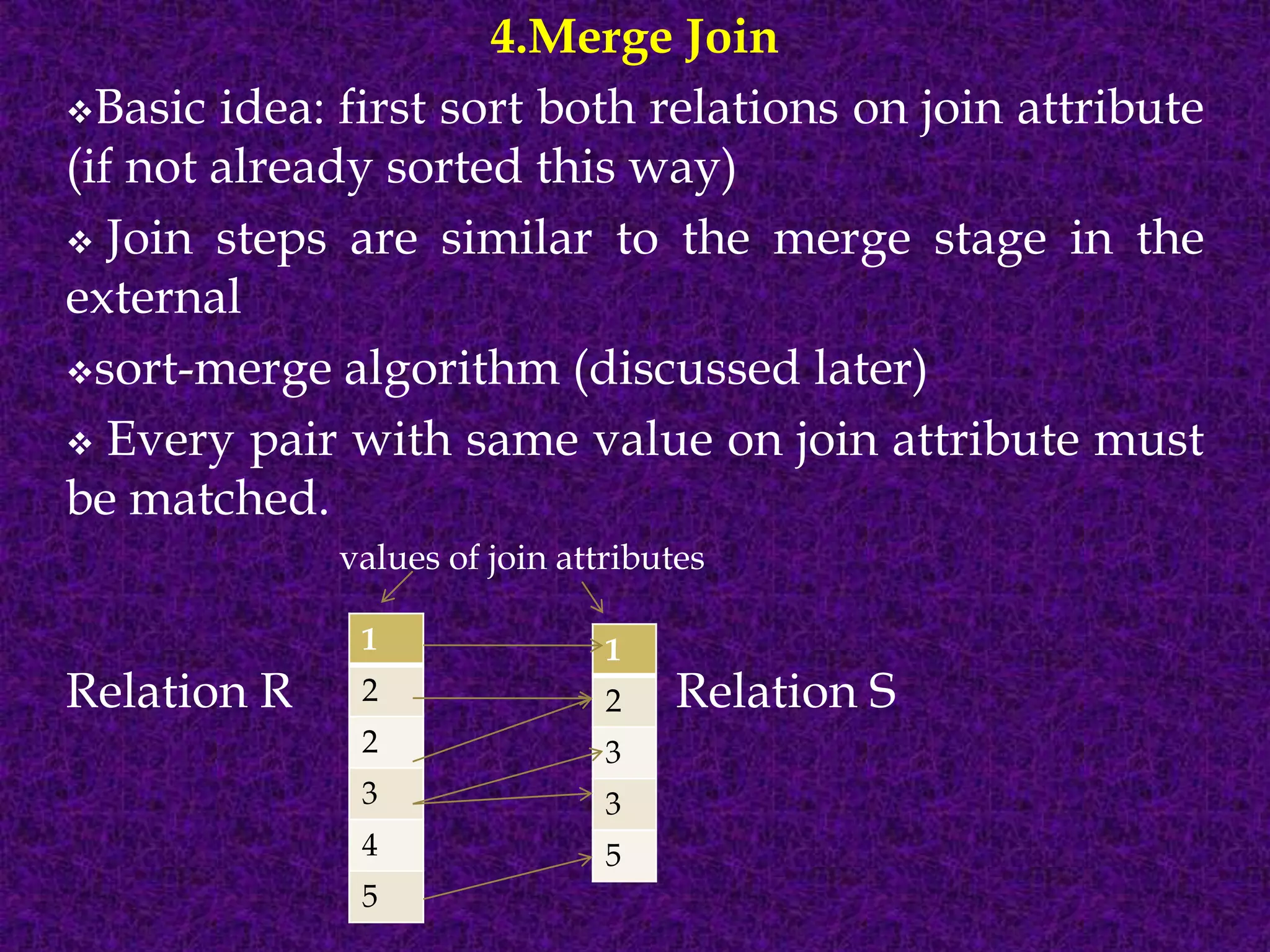Different algorithms can be used to implement joins in a database, including nested loop, block nested loop, indexed nested loop, merge, and hash joins. The optimal algorithm depends on factors like whether indexes are available on the joined attributes and the relative sizes and block distributions of the relations. Database tuning involves monitoring performance and adjusting aspects like indexes, queries, and design to improve response times and throughput.



















